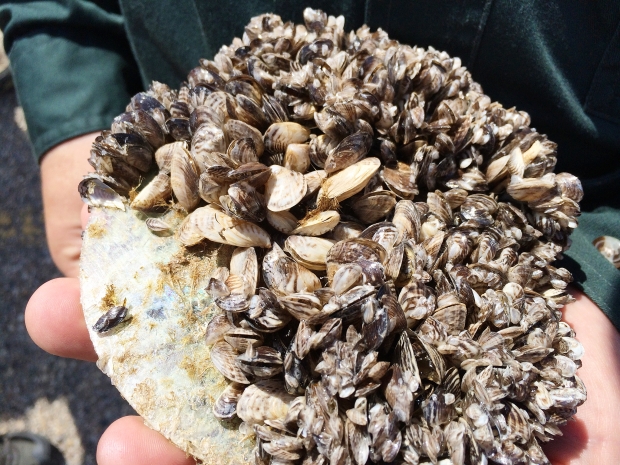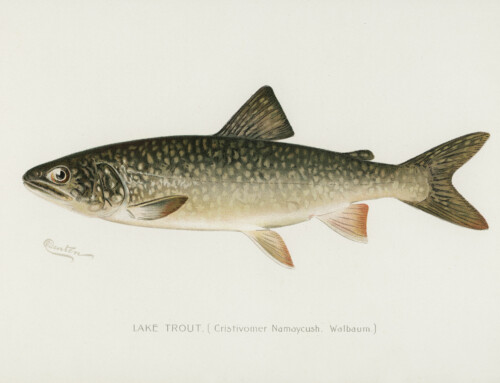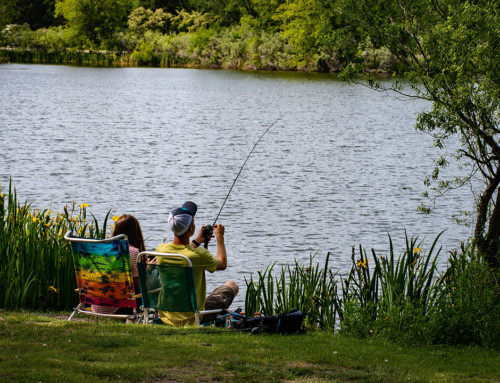Originally Published by the Leader Post, May 8, 2015
By Terrence McEachern
REGINA — Zebra and Quagga Mussels have been recently discovered in Lake Winnipeg, but these invasive species have not made their way into Saskatchewan’s aquatic systems.
And the provincial government wants to keep it that way.
“The biggest common thing with aquatic invasive species is the impact on the native aquative community and the native species that are present. However, in the case of the invasive mussels … not only can they have influence on the aquatic ecosystem but also water related infrastructure that has economic implications as well,” Chad Doherty, a fisheries biologist with the province, said Thursday.
To mark the start of Aquatic Invasive Species Awareness Week on Sunday, the province announced that it will be stopping vehicles with boats to inspect for Zebra and Quagga mussels. The province is encouraging residents to clean, drain and dry their boats and fishing equipment before entering Saskatchewan. If an invasive species is found, conservation officers can quarantine the vehicle and remove mussels with a mobile decontamination spraying unit on the back of a trailer.
Zebra and Quagga Mussels
What they do: Consume massive amounts of algae and microscopic organisms resulting in permanent changes to lake ecosystems and the food chain. They can also clog boat engines and water intake pipes, including pipes at a lakeside cottage.
Where are they found: Discovered in the Great Lakes in the 1980s and spread to parts of the U.S. Recently found in Lake Winnipeg.
Fishhook and Spiny Waterfleas
What they do: Threaten ecosystems by compete with native fish for food. They also collect along fishing lines. They can be transported into the Saskatchewan similar to Zebra or Quagga Mussels by clinging to boats or fishing equipment. Because of the sharp or spiny external features, fish cannot feed on them.
Where are they found: Discovered in the Great Lakes in the early 1980s. Waterfleas have since moved to parts of the U.S.
Asian Tapeworm
What they do: Parasite that competes with other parasites in the intestines for nutrients. Can affect a fish’s growth and health.
Where they are found: Great Lakes, parts of the U.S. and Lake Winnipeg.
New Zealand Mudsnail
What they do: Similar to the invasive mussels in that they can cling to boats and intake pipes.
Where are they found: Mainly the Southern U.S.
Rusty Crayfish
What they do: More aggressive than native species of crayfish. Affect fish populations by feeding on eggs and young fish. Also feed on aquatic plants.
Where are they found: Mainly in the U.S. but has also been discovered in Ontario and Manitoba.
Northern Snakehead
What they do: Predatory fish that affects ecosystems by eating insect larvae, small crustaceans, frogs, small reptiles, other birds and at times small birds and mammals. No natural predators. Capable of moving on land using their pectoral fins and can live for days out of water.
Where are they found: Native to China and Siberia and have been reportedly discovered in North America. In 2011, the province banned the import and sale of Northern Snakeheads.
Sources: Saskatchewan Ministry of Environment and the Saskatchewan Invasive Species Council
Photo courtesy of Saskatchewan Ministry of Environment and the Saskatchewan Invasive Species Council







